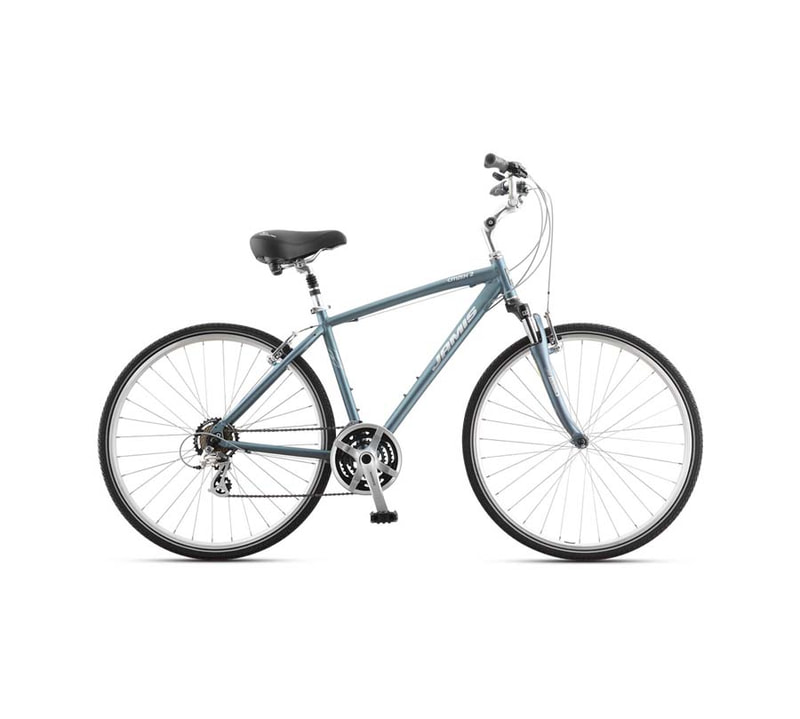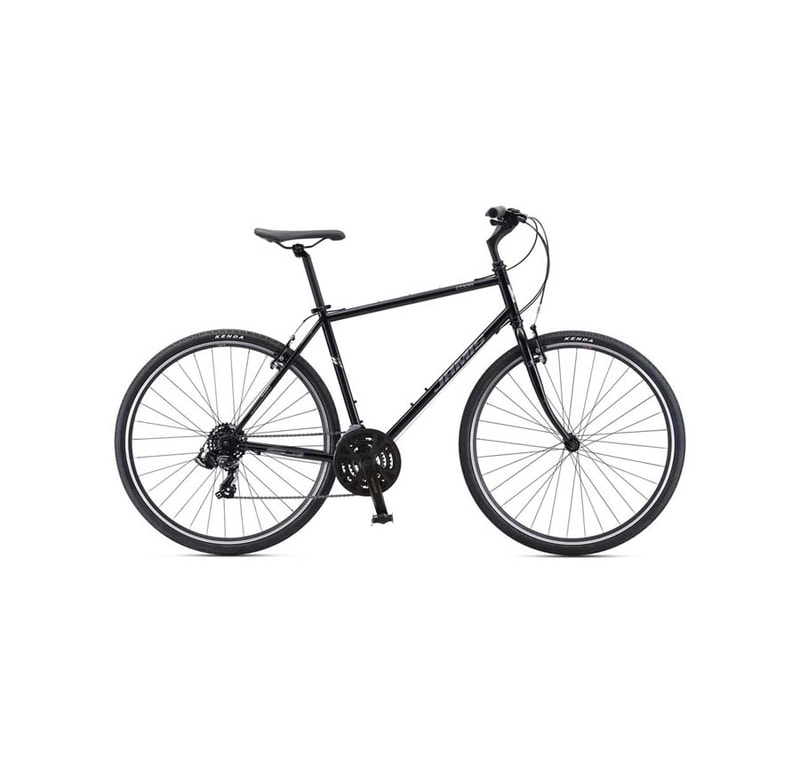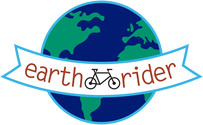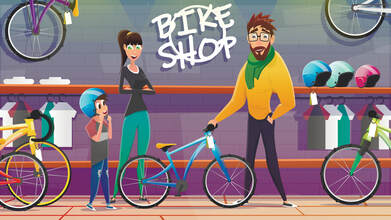 You’ve discovered that cycling improves cardio-vascular and aerobic fitness, lowers blood pressure, boosts energy, builds muscle, and improves coordination and is just plain fun, so now you need a bike. But with so many styles, options, and places to buy, how do you know what is the right bike for you? Cycling is a diverse world and there is a bike for everyone regardless of age, fitness level or riding style. You can increase your chance of finding your best ride ever by answering a few questions. What type of riding do you plan to do? If you are going to be riding in the city, a hybrid bike might be the best option for you. A hybrid is a cross between a road bike and a mountain bike and is characterized by an upright riding position, a medium width, smooth tire designed for pavement, and ability to add accessories that will make your ride comfortable. But even within the class of hybrids there are several categories to choose from:
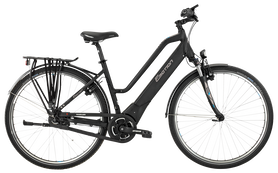 EMotion Atom Wave Diamond ebike EMotion Atom Wave Diamond ebike Here are some other popular types:
If you plan to do different types of riding, i.e., city riding and off road, it may be hard to choose just one category. This is why you probably know of people who own an entire garage full of bikes. If you are just starting out cycling, pick one category to start and know that there is no law against riding a bike occasionally in conditions for which it was not primarily designed. What are the key parts of a bike? Frame – made of aluminum, steel, or titanium or carbon fiber (on more expensive models). Comes in different sizes to fit riders of different heights. Tires – made of rubber of various thicknesses, thin for fast road bikes, medium for hybrids, and thick for mountain. Tires with a layer of Kevlar will resist flats easier. Those designed for off road will be knobby, and although they can be ridden on pavement, will require more effort. Comes in 26, 27 (or 700cc) and 29 inches in diameter. Drive chain - may have one speed which is all you need for biking in flat areas or up to 30 gears for hilly terrain or for speed or to have an option of the gear that is most comfortable for you. Suspension – comfort hybrids usually come with light weight shock absorbers on the front fork and seat post to smooth out bumps and jolts although these add weight to the bike. Mountain bikes might have shocks on both the front and rear and some contain fluid for more adjustability. Saddle – designed for the intended riding position on the bike, i.e. more padding for those with an upright style, less for those which balance the rider weight between the seat, hands, and feet. There are saddles specifically designed for a woman’s anatomy. Handlebar – flat or curved and closely related to the riding position on the bike How much should I spend? A quality bike from a major bike brand starts about $400-$500 but can go up rapidly from there. If you spend more you will get a lighter bike that is easier to pedal, better parts that shift and brake better, stay in tune longer and requires less maintenance. If something should break as a result of a crash or wear, having standard parts will make it easier to repair. A quality bike will last a lifetime although if you become an enthusiast, the industry offers many innovations that will tempt you to upgrade. Resist buying a bike at a department or big-box store such as Wal-Mart, Dick's or Target. They often contain non-standard, heavy, cheap parts to meet a low price point. The result are parts that break easily and have a rough performance that makes them not fun to ride. A used bike from a major bike brand is a better value than a new, cheap bike. Selecting the right size Bikes come in different frame sizes to accommodate different rider heights, weight and body shape (i.e. legs, torso, and hand length). A general rule of thumb is that you should be able to stand over the top tube of the frame flat footed and there should be a gap of a few inches. If it touches, you need a smaller frame, if there is a gap greater than 1-2 inches you need a larger frame. If the bike has a step thru frame, the same measurement applies, just imagine a line across the frame as if it had a top tube. The bike can be adjusted further due to the ability to raise the saddle and handlebars, so the stand over height is just a starting point. Starting from the stand over frame that fits you, you might want to move to a larger size if you feel crunched in the upper body or a smaller frame if you feel stretched on a test ride. When it comes to bicycle fit, it is good to get the advice from an experienced sales person at a bike shop and a test ride is essential. For those that plan to go bike touring or spend a lot of time in the saddle, a professional bike fit is a good investment. Bike fitters are professionally trained to measure rider limbs and noting any asymmetrical elements and then dialing in all contact positions on the bike such as saddle height and forward and aft position, stem length, handlebar width, and pedal position. Where to buy? Local bike shop – offers expert help in finding the best bike for you and services what they sell. Depending on the size of the shop, there might be a more limited selection and it might be slightly more expensive in the short term, since, after all, there is a cost to have staff trained to provide you with expert advice. Test rides available. Online retailer – you get better pricing and access to a brand’s full line, but you are on your own for selecting the right bike for you in the right size. There is no test ride and you must make arrangements to assemble the bike when it arrives at your house in a box—either figure out how to assemble it yourself or pay a local shop to do it. Garage sales and Craigslist – deals are available when buying from a friend or neighbor especially if they can tell you the history of the bike and how it has been maintained. There is risk, however, since there is no warranty and you need to be knowledgeable about bikes to know if it is a good deal. By the time you fix defects, i.e. replace rotten tires, rusty chain, broken shifters, it could end up costing more than new bike. How to test ride? Wear comfortable clothes, the same type you plan to wear when riding. Bring an ID and credit card to leave at the shop during the test. While on the test ride, shift through all the gears, make note if the steering and riding position is to your liking, if the brakes enable you to stop quickly, and if the saddle is comfortable to sit on. If the shop has the model you are interested in their rental fleet it would be a good idea to rent it for an extended ride since many shops will credit the price of a rental toward a purchase. With a little thought and research, buying a bike can be an adventure that results in a lifelong journey to a happy place. Comments are closed.
|
Earth Rider Blog about CycingAuthorSharon Kaminecki and others comment on adventures in bicycling and other stories Categories
All
Archives
August 2023
|

